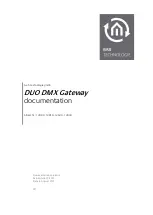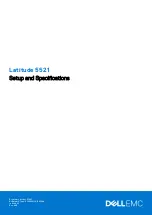
A
Glossary of Terms
195
SPF
Sender
Policy
Framework
(SPF)
is
an
anti
‐
spam
approach
in
which
the
Internet
domain
of
an
e
‐
sender
can
be
authenticated
for
that
sender,
thereby
discouraging
spam
mailers,
who
routinely
disguise
the
origin
of
their
e
‐
mail,
a
practice
known
as
e
‐
spoofing.
SPF
and
other
anti
‐
spoofing
initiatives,
such
as
Domain
Keys,
work
by
making
it
easier
for
a
server
to
determine
when
a
message
came
from
a
domain
other
than
the
one
claimed.
Spoofing
Clever
attackers
make
tricks
to
fool
the
firewall
by
pretending
the
identity
of
a
trust
host,
which
is
the
so
called
Spoofing
technique.
Stub
area
To
reduce
the
flooding
traffic
of
external
routes
advertisement,
a
special
area
called
“stub
area”
can
be
configured.
When
a
stub
area
is
configured,
the
ABR
will
automatically
advertise
a
default
route
so
that
routers
in
the
stub
area
can
reach
destinations
outside
the
area.
The
default
route
becomes
the
single
exit
point
of
the
stub
area,
and
the
area
will
not
accept
broadcasts
of
external
routes.
SYN
flooding
SYN
flooding
is
a
method
that
the
user
of
a
hostile
client
program
can
use
to
conduct
a
denial
‐
of
‐
service
(DoS)
attack
on
a
computer
server.
The
hostile
client
repeatedly
sends
SYN
(synchronization)
packets
to
every
port
on
the
server,
using
fake
IP
addresses.
Transport
Layer
Security
(TLS)
Transport
Layer
Security
is
a
protocol
providing
confidentiality,
authentication,
and
integrity
for
stream
‐
like
connections.
It
is
typically
used
to
secure
HTTP
connections.
The
protocol
is
being
standardized
by
a
working
group
of
the
IETF.
Transparent
mode
In
Transparent
Mode,
the
SEG
will
be
completely
invisible
for
hosts
in
the
network,
with
the
exception
that
packets
that
are
not
allowed
by
the
firewall
rule
set
will
be
dropped.
Twofish
A
strong
and
fast
block
cipher
designed
by
Bruce
Schneier.
Twofish
was
one
of
the
five
final
candidates
for
the
United
States
government's
new
cipher
standard,
AES
(Advanced
Encryption
Standard).
Twofish
uses
a
block
size
of
128
bits
and
a
key
length
of
up
to
256
bits.
Traffic
shaping
Traffic
Shaping
is
a
mechanism
that
alters
the
traffic
characteristics
of
a
stream
of
cells
on
a
flow
to
achieve
better
network
efficiency,
while
meeting
the
QoS
objectives,
or
to
ensure
conformance
at
a
subsequent
interface.
Traffic
shaping
must
maintain
cell
sequence
integrity
on
a
flow.
Shaping
modifies
traffic
characteristics
of
a
cell
flow
with
the
consequence
of
increasing
the
mean
Cell
Transfer
Delay.
Tunneling
The
encapsulation
of
packets
in
a
high
level
protocol
before
transporting
them
across
the
network.




































